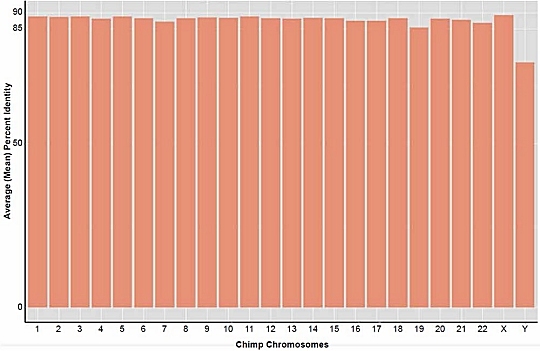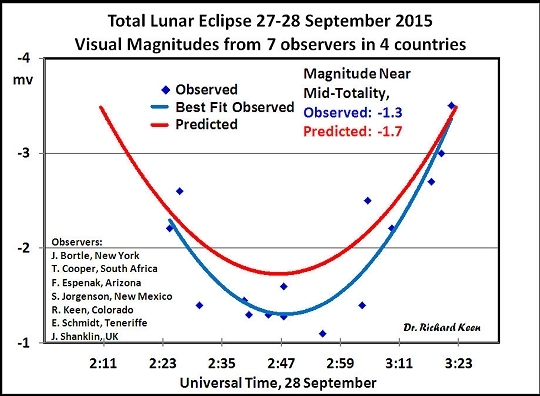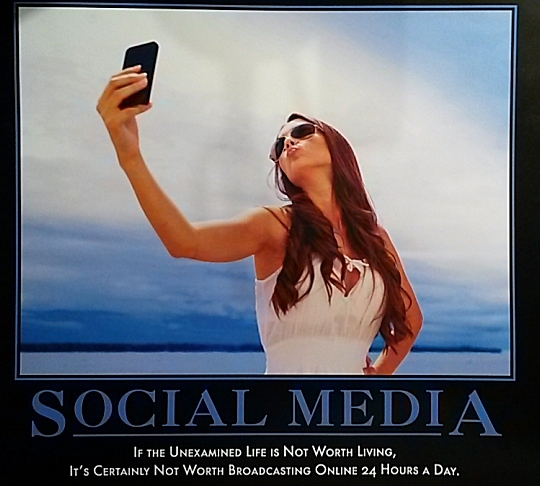Jay L. Wile's Blog, page 44
October 22, 2015
What’s Killing Corals? It Could Be Your Sunscreen.

Coral reefs like this one support a wide diversity of ocean life. (click for credit)
Coral reefs are often called “the rainforests of the sea,” because the are so rich in biodiversity. According to the National Oceanic and Atmospheric Administration, they support more species per unit area than any other marine environment and produce as much as $375 billion each year in economic activity. As an amateur scuba diver, I know the amazing beauty of coral reefs firsthand. That makes the following statistics from the Global Coral Reef Monitoring Network alarming: the oceans have lost 19% of their coral reefs (by area), an additional 15% are seriously threatened in the next 10-20 years, and another 20% are threatened in the next 20-40 years.1
What is causing this terrible loss? Here is how one organization puts it:
All over the world coral reefs are dying out. Marine pollutants, agricultural run-off and, above all, global warming, are taking a toll on these fragile marvels of nature…Politicians may be able to deny global warming, corals, sadly, don’t have that option.
While it is very fashionable these days to blame nearly any environmental crisis on “global warming,” we have no idea what the key factor in the loss of coral reefs is. Indeed, we don’t even know if there is a key factor. There might be several processes that are working together to produce this global loss of coral, and some of them might be completely unknown. However, an international team of researchers has found one thing that is definitely harming coral, and it certainly wasn’t anything I expected!
The researchers realized that there is at least one contaminant in the oceans that has been steadily increasing over the past few decades: oxybenzone. It is found in nature, but not in the ocean. It is produced by plants to provide protection from ultraviolet radiation that comes from the sun. In the 1980s, it was approved by the U.S. Food and Drug Administration for use on people. As a result, a wide range of cosmetics now contain oxybenzone, and it is a common active ingredient in sunscreen.
In their study,2 the researchers took samples of water from coral reefs in the U.S. Virgin Islands and Hawaii. They found that all samples contained oxybenzone, and the more popular the reef was with tourists, the higher the concentration. They then tested the effects of oxybenzone on coral larvae and adult coral cells in the lab. The results were significant, even at relatively low concentrations.
Exposure to oxybenzone deformed coral larvae, making them unable to float with the currents, which is the way they have been designed to disperse. In addition, the larvae suffered damage to their DNA. Amazingly, the concentration at which this happened was very low: 62 parts per trillion. In other words, only 62 molecules of oxybenzone among a trillion other molecules in marine water can produce harmful effects in coral larvae. The concentration found in the waters of coral reefs off the U.S. Virgin Islands was up to 23 times higher than that.
Adult coral can be harmed by oxybenzone as well. Individual coral cells were killed by oxybenzone concentrations comparable to what was found in the U.S. Virgin Islands, and many cells that survived suffered DNA damage. The researchers also showed that exposure to oxybenzone increased the rate of coral bleaching, which can lead to large-scale coral death. The toxicity of oxybenzone increases with sunlight, which is unfortunate, since corals need sunlight to survive. In the end, then, this study makes it clear that oxybenzone is a threat to the health of coral reefs.
This, of course, poses a dilemma for people who love the beach but don’t want to get sunburned. If you lather up with sunscreen, as recommended by doctors, you risk killing coral when you swim, snorkel, or scuba dive. You could choose from among many oxybenzone-free sunscreens, but we have no idea what the effects of their active ingredients will be on coral. Remember, oxybenzone is a natural chemical!
I do know this: I will no longer put on sunscreen before I scuba dive, and I will tell every scuba diver I meet about this study.
REFERENCES
October 19, 2015
Debunking the Myth That Copernicus “Demoted” the Earth

Jan Matejko’s painting entitled, “Astronomer Copernicus, or conversation with God.”
It is a common statement made in many discussions of how Copernicus revolutionized our understanding of the universe. Goethe’s quote is a typical example:
Of all discoveries and opinions, none may have exerted a greater effect on the human spirit than the doctrine of Copernicus. The world had scarcely become known as round and complete in itself when it was asked to waive the tremendous privilege of being the center of the universe.
If you read one of my previous blog posts you will recognize one myth in that quote. People knew the earth was round long, long before Copernicus. Indeed, by 200 BC or so, the distance around the earth had been measured.
There is, however, another myth in the quote. Do you see it? It is the myth that the ancients put the earth at the center of the universe to indicate how important humanity is and that Copernicus “demoted” the earth and humanity’s importance by taking the earth out of that center. While this myth is commonly taught wherever Copernicus’s revolution is discussed, it is quite false.
One of my readers (Alec) sent me perhaps the most helpful article I have ever read on the subject. It was written by Dr. Dennis Richard Danielson, a professor of English at the University of British Columbia. He discusses the myth and how pervasive it is, and then he explains why Aristotle and Ptolemy put the earth at the center of the universe. It wasn’t because earth was special, but because it was composed of the heaviest element (earth), and according to Aristotle, that element always seeks the very center.
He then goes on to discuss how medieval philosophers and theologians interpreted the earth’s position at the center of the universe. Here is his summary:
In most medieval interpretations of Aristotle’s and Ptolemy’s cosmology, earth’s position at the center of the universe was taken as evidence not of its importance but (to use a term still in circulation) its grossness…In this view, the earth appears as a universal pit, figuratively as well as literally the world’s low point.
So far from “demoting” the earth from its “exalted” position in the heavens, Copernicus could be seen as raising the status of the earth by pulling it out of the universal pit.
Now, of course, that’s not why Copernicus developed his model of the universe. He put the sun in the center of the universe because it produced a model that was less messy than Aristotle’s and Ptolemy’s earth-centered model. Since Copernicus thought the universe had “…been built for us by the Best and Most Orderly Workman of all,” he thought that the most orderly model would be the correct one. He also had some astronomical observations that were easier to understand with his model than with the geocentric model.
In the end, then, it was a combination of the observable data and Copernicus’s concept of God that motivated his model of the universe. Man’s importance was simply not factor. However, if Copernicus did anything, he raised the importance of earth by pulling it out of the universal pit and allowing it to dance with the stars.
October 15, 2015
New Study Indicates Chimp DNA is 88% Similar to Human DNA

A chromosome-by-chromosome comparison of human and chimp DNA. The bars show the percent match on the chimpanzee chromosome to the corresponding portion of human DNA. (figure from the study being discussed)
NOTE: Based on comments below by Glenn (who is mentioned in the article) and Aceofspades25, there are questions regarding the analysis used in Dr. Tomkins’s study, upon which this article is based. Until Dr. Tomkins addresses these questions, it is best to be skeptical of his 88% similarity figure.
More than two years ago, Dr. Jeffrey P. Tomkins, a former director of the Clemson University Genomics Institute, performed a detailed, chromosome-by-chromosome comparison of human and chimpanzee DNA using a widely-recognized computer program known as BLAST. His analysis indicated that, on average, human and chimpanzee DNA are only about 70% similar. This is far, far, below the 95-99% numbers that are commonly cited by evolutionists, so once I read the study, I wrote a summary of it. Well, Dr. Tomkins has done a new study, and it invalidates the one he did two years ago.
The new study was done because last year, a computer programmer of financial trading algorithms (Glenn Williamson) discovered a bug in the BLAST algorithm that Tomkins used. This bug caused the program to ignore certain matches that should have been identified, which led to an artificially low similarity between the two genomes. As any responsible scientist would do, Dr. Tomkins took this issue seriously and did a detailed analysis of several different versions of the BLAST program. His analysis showed that most of the newer versions of the program were bugged, including the one used in his study two years ago.
As a result, Dr. Tomkins redid his study, using the one version of BLAST that did not contain the bug. His results are shown above. As you can see, every chromosome in the chimpanzee genome, with the exception of the Y chromosome, matched a corresponding region of the human genome by somewhere between 85% and 90%. The overall similarity between the human and chimpanzee genomes was 88%. While this is still far lower than the 95%, 98%, or 99% similarity touted by many evolutionists, it is much higher than the 70% found in his previous study.
To make sure that these new results aren’t an artifact of some other unknown issue in the BLAST computer program, Dr. Tomkins also did his analysis with two other programs: nucmer and LASTZ. The nucmer program’s results agreed with the unbugged BLAST results: on average the human and chimpanzee genomes are 88% similar. The LASTZ program produced a lower average similarity (73%), which indicates that perhaps LASTZ has a bug or is not optimized for such comparisons, since its results are very close to the results Dr. Tomkins got with the bugged version of BLAST.
I think this is the most comprehensive comparison of human and chimpanzee DNA that has been done, so I am inclined to take the results (88% similarity between human and chimpanzee DNA) as the best number we have to date. Of course, I said something similar about Dr. Tomkins’s previous study (which turned out to be wrong), so take that statement with a grain of salt! [later addition:It might not be the best number we have to date. See note at the top of the article.]
October 12, 2015
Debunking the Flat Earth Myth

This painting depicts Christopher Columbus kneeling in front of Queen Isabella.
Since today is Columbus Day, I thought I would discuss a myth commonly associated with the man. I learned it in school, as did many others. It’s the myth that people in Columbus’s day thought the earth was flat. Highlights of American History Before 1850, for example, tells students about a conversation that supposedly took place between Christopher Columbus and Queen Isabella:1
“Your Highness,” said Columbus, “instead of going east across the land to reach India, your traders can sail west across the ocean.” “What? Are you mad?” asked Queen Isabella. “If they sail too far west they will fall off the edge of the earth!”
A more recent book puts it this way:2
Only 500 years ago, sailors aboard the Santa Maria begged Columbus to turn back lest they sail off the Earth’s “edge.”
There is a big problem with such pronouncements: no historical evidence exists to back up the idea that most people (even uneducated people) in Columbus’s day believed the earth was flat. In addition, there is a wealth of evidence that indicates no one took such an idea seriously.
We know, for example, that philosophers understood the spherical shape of the earth long before Christ was born. It was discussed by philosophers like Pythagoras in the fifth century BC3 and became widely accepted when it was championed by Aristotle (384–322 BC). He saw that the stars were different in one part of the world than the other. This indicated to him that the earth must be a sphere.4 The spherical shape of the earth was so widely accepted among philosophers that Eratosthenes (c.276–c.195 BC) used the change in a staff’s shadow resulting from a 500-mile trip to measure the circumference of the earth. He was correct to within less than 2% of today’s accepted value.5
But wait a minute. Didn’t the early church teach that the earth is flat? Absolutely not. The earliest voice in Christendom who mentions the shape of the earth is Clement of Alexandria (AD 150-215), and he wrote:6
And how the Earth and sea their place should keep; And when the seasons, in their circling course, winter and summer, spring and autumn, each should come, according to well ordered plan; out of a confused heap who didst create this ordered sphere, and from the shapeless mass.
I can’t find any early Christian writer who even suggested that the earth was flat. Why do people think the church taught a flat earth? According to historian Dr. James Hannam:7
The myth that a flat earth was part of Christian doctrine in the Middle Ages appears to have originated with Sir Francis Bacon (1561–1626), who wrongly claimed that geographers had been put on trial for impiety after asserting the contrary.
So the church never taught a flat earth, and educated people since the third century BC knew the spherical shape of the earth. Even uneducated sailors understood that the earth must be a sphere, because they knew you that the higher you got above sea level, the farther away you could see the ships that were at sail. Why, then, did Columbus have trouble getting support for his ambitious idea to sail around the world to reach India? Because thanks to Eratosthenes in the second century BC, educated people knew how far he would have to sail to complete the trip, and they didn’t believe such a voyage could be made!
But who originated the idea that people thought Columbus would sail off the edge of the earth? It seems to have come from Washington Irving, the fiction author who wrote “The Legend of Sleepy Hollow.” In 1828, he wrote a novel of historical fiction entitled, A History of the Life and Voyages of Christopher Columbus. Apparently, he read an account of the meeting between Columbus and Queen Isabella that was written 130 years after Columbus set sail. He embellished it, and ended up producing a scene in which a “university council” argued that the earth was flat and Columbus would sail off its edge. Samuel Eliot Morison (a historian and distinguished naval officer) evaluates Irving’s work as follows:8
The whole story is misleading and mischievous nonsense…The sphericity of the globe was not in question. The issue was the width of the ocean; and therein, the opposition was right.
On this Columbus day (or any other day), when you hear someone say that ancient people (or the church) thought the earth was flat, please set them straight. Lies need to be debunked, especially ones that are taught to us in school!
REFERENCES
October 8, 2015
What We Learned from the Recent Lunar Eclipse
![The moon during the recent eclipse as seen by a camera (left) and through a telescope (right). [click for a larger image]](https://i.gr-assets.com/images/S/compressed.photo.goodreads.com/hostedimages/1446570428i/16832290.jpg)
The moon during the recent eclipse as seen by a camera (left) and through a telescope (right). [click for a larger image]
If you watched the lunar eclipse on September 27th, you were treated to quite a sight! My wife got some great pictures of it, two of which are shown above. The image on the left is a picture she got with her camera alone, and the one on the right is what she got with her camera looking through my telescope. That was a particularly difficult shot, because the camera wasn’t designed for the telescope. She just pointed her camera at the eyepiece and patiently played with its orientation until she got the best shot she could.
The eclipse was beautiful, but it did produce something unexpected: a dark moon. Now, this eclipse was supposed to be dark, because the moon was at its perigee, which is the closest it gets to the earth. As a result, the earth’s shadow covered it a bit more thoroughly than it would have if the moon had been farther from the earth. Nevertheless, a lunar eclipse doesn’t make the moon go completely dark, because sunlight is bent through the earth’s atmosphere and shines on the moon. The process of sunlight traveling through the atmosphere produces a noticeable effect.
Sunlight is composed of many different wavelengths of light, each of which corresponds to a color that we perceive. The longest wavelengths of sunlight are red, while the shortest wavelengths are blueish. The other colors (orange, yellow, and green) are in between. Because wavelength and energy are inversely proportional, red sunlight is lowest in energy, and blue sunlight is highest in energy. Once again, the other colors are in between. Well, when sunlight passes through the atmosphere, it can bounce off particles and molecules floating in the air. Higher-energy light tends to bounce off more things than lower-energy light, so as sunlight passes through the earth’s atmosphere, the blues and greens tend to bounce around more than the reds, oranges, and yellows.
This is why the sun appears reddish-orange at sunset. When you look at the sun, the light you see is traveling straight from the sun to your eyes. The closer the sun is to the horizon, however, the more atmosphere its light must travel through to reach your eyes. Since the blues and greens tend to bounce off things in the air, they don’t travel as straight as the reds and oranges. As a result, more red and orange light coming from the sun hits your eyes than blue and green light, so the sun appears reddish-orange when it is near the horizon. The same effect causes the moon to appear reddish-orange during a lunar eclipse.
Of course, all of this is well-understood, so long before the lunar eclipse happened, some astronomers had calculated how bright the moon should have been during the lunar eclipse. When astronomers actually observed the moon, however, it was measurably darker. The graph below comes from Universe Today. It shows the expected brightness (magnitude) of the moon (red curve) compared to the observed brightness (blue curve).

Because of the way magnitude is defined, the more negative the number, the brighter the moon. Thus, the observed magnitude (-1.3) is darker than the predicted magnitude (-1.7).
Why was the moon darker than expected? We don’t know for sure, but Universe Today suggests that it is the result of small solid and liquid particles, collectively known as aerosols, floating in the atmosphere. The eruption of Chile’s Calbuco volcano five months ago spewed lots of dust and ash in the air. Most likely, some of those aerosols have yet to settle back to the ground. In addition, the forest fires in Canada and the Western U.S. this summer put lots of smoke particles in the air, and some of those aerosols probably haven’t settled out of the atmosphere, either. Finally, human-produced pollution is probably to blame as well. When we burn coal and oil for energy, it produces aerosols that linger in the atmosphere.
Imagine that. The lunar eclipse was both beautiful and informative!
October 5, 2015
Do Selfies Result in More Deaths than Shark Attacks?

A woman uses a ‘selfie stick’ to take a selfie. (click for credit)
The headline on my Facebook feed was just too interesting to ignore: More People Die Taking Selfies Than Being Attacked by Sharks! I clicked on the photo, which sent me to this article. The first line tells you the gist of the story:
A tally of selfie-related incidents leading to deaths this year comes with a startling revelation — selfie deaths in 2015 outnumber deaths from shark attacks.
Of course, the sources seemed a bit dubious. The first was a list of shark attacks compiled in a survivors’ forum, and the second was a list of selfie-related deaths as compiled by Mashable.com. I really didn’t trust either of those sources, so I decided to look into this intriguing idea a bit more.
Finding a reliable source for shark attack deaths was pretty easy. The Florida Museum of Natural History has an ichthyology (study of fishes) department that does a pretty good job of compiling shark attacks worldwide. While they haven’t posted any preliminary data for 2015, they do have data from 2005 through 2014. As you can see from their first table, fatal shark attacks ranged from 1 in 2007 to 13 in 2011. In 2014, there were 3 fatal shark attacks.
Getting data on selfie-related deaths is a bit more difficult. The only comprehensive source I could find was a Wikipedia article entitled, “List of selfie-related injuries and deaths.” While I wouldn’t necessarily trust a list on Wikipedia, this one has references to each of the incidents, and the references seem to be reliable. As a result, I decided to do my own comparison between selfie-related deaths and shark attack deaths.
As you can see, my two sources only overlap for one year, 2014. In that year, there were 3 fatal shark attacks worldwide. There are 11 incidents on the Wikipedia list of selfie-related injuries and deaths for 2014. One of them (a 15-year-old boy in the Philippines) doesn’t seem to have resulted in death, but one of the other incidents (a polish couple) resulted in two deaths. Thus, there seem to have been 11 selfie-related deaths in 2014. For the year 2014, then, the number of selfie-related deaths was greater than the number of fatal shark attacks.
While one year doesn’t tell us much, there are some other things I can point to that indicate selfies probably do result in more deaths than shark attacks. First, the Wikipedia list of selfie-related deaths for 2015 already stands at 23. Seven of those deaths came from a single incident! That’s more fatalities than the most deadly year in shark attacks (13 in 2011), so we can probably assume that there will be more selfie-related deaths than shark attack deaths in 2015 as well.
Here’s one more thought. I would think the Florida Museum of Natural History’s Ichthyology department has a good handle on how to research shark attack deaths. Thus, their numbers are probably pretty accurate. However, I would not expect a list on Wikipedia to be comprehensive. As a result, I would expect the number of selfie-related deaths is actually a bit higher than what you get from Wikipedia. Once again, that would lead us to the conclusion that selfie-related deaths are, indeed, more numerous than shark attack deaths.
This reminds me of the 2015 Despair Calendar’s July entry:

October 1, 2015
Bill Nye Once Again Demonstrates His Ignorance of Basic Science
Bill Nye calls himself the ‘Science Guy’ but doesn’t know much about science.
(click for credit)
He opens up the video with a scientific error, stating:
Many, many, many, many more hundreds of eggs are fertilized than become humans. Eggs get fertilized, and by that I mean sperm get accepted by ova — a lot.
Of course, that is false. According to The Johns Hopkins Manual of Gynecology and Obstetrics,1 30-40 percent of all conceptions end in spontaneous abortion. The National Institutes of Health say that it might be up to 50%. The highest rate of spontaneous abortion occurs with in vitro fertilization, and that rate is nearly 93%.
So, in the normal course of things, maybe as many as half of conceptions end in spontaneous abortion. That means only twice as many eggs are fertilized than children who are born. Even with in vitro fertilization, about 13 times as many eggs are fertilized as children who are born. Bill Nye’s “Many, many, many, many more hundreds” statement has no scientific support whatsoever. Why does he make this false statement? Because he wants to use it to make a claim that is completely bizarre.
After spouting something that has no basis in science, he says:
But if you’re going to hold that as a standard, that is to say, if you’re going to say when an egg is fertilized, it therefore has the same rights as an individual, then whom are you going to sue, whom are you going to imprison, every woman who has had a fertilized egg pass through her? Every guy whose sperm has fertilized an egg and then it didn’t become a human, have all these people failed you?
Think about what he is suggesting. He is trying to say that when a woman loses a baby through no fault of her own, it is equivalent to when a woman goes to a “doctor” and tells the “doctor” to kill her baby. That, of course, is nonsense. It’s like saying that the mother whose son dies of cancer should be sued or imprisoned! We don’t sue or imprison people for events over which they have no control! The mother who suffers a spontaneous abortion isn’t at fault for her child’s death. The mother who tells her “doctor” to kill her baby is directly at fault for her baby’s death, as is the “doctor.”
Nye then goes on to suggest that men are responsible for wanting to outlaw abortion:
I’m not the first guy to observe this, you have a lot of men of European descent passing these extraordinary laws based on ignorance.
What he would have found had he done even a bit of investigation is that the majority of women in the U.S. are pro-life. Indeed, the latest poll I have seen says that 57% of women are in favor of making abortion illegal in most circumstances, while only 40% are in favor of making it legal in most circumstances. It’s ironic that Bill Nye is demonstrating his own ignorance while calling others ignorant!
Towards the end of his video, Nye says the following:
But I really encourage you to look at the facts…
I absolutely agree. Where would you go to learn the facts? What about a textbook on embryology? In The Developing Human: Clinically Oriented Embryology, we read:2
Human development begins at fertilization, when a sperm fuses with an oocyte to form a single cell, the zygote. This highly specialized, totipotent cell (capable of giving rise to any cell type) marks the beginning of each of us as a unique individual. [emphasis in original]
Science, therefore, tells us that human life begins at conception. Of course, if Nye doesn’t like to get his information from textbooks, he could read what a world-renowned geneticist has to say on the subject. Dr. Jermoe L. LeJeune was the brilliant geneticist who first demonstrated a link between certain diseases and chromosomal abnormalities. While testifying before a U.S. Senate Subcommittee, he said:3
To accept the fact that after fertilization has taken place a new human has come into being is no longer a matter of taste or opinion. The human nature of the human being from conception to old age is not a metaphysical contention, it is plain experimental evidence.
I truly hope Bill Nye takes his own advice and learns the facts related to human life. If he does, he will find that a pro-choice position is simply inconsistent with the scientific evidence. See here and here for more scientific data related to this very important topic.
REFERENCES
September 28, 2015
A Drama About Grace

If you haven’t been reading this blog long, you might not know that while science is my main interest, I do have some others. One of them is acting. For a brief time, I was a professional actor, but nowadays, acting is just a hobby. For example, I perform in community theater productions. In fact, I am currently preparing for the role of a gangster in Cole Porter’s classic Kiss Me Kate. It’s a fun role and allows me to sing what I think is the best song in the show, “Brush Up Your Shakespeare.” I also write and perform in dramas at our church. As a result, I have a category named “Christian Drama,” where I post some of the church dramas that I have written.
Yesterday, our pastor (Marc Adams) preached a sermon on Grace, one of the most important aspects of Christianity. His sermon had three main points, and the first one was “Grace gives me relief from yesterday.” It emphasizes how Christians need not be slaves to their past, because grace allows us to move on from our previous sins. I wrote the following drama to illustrate this important idea.
As is the case with all my dramas, feel free to use this in any way you think will edify the Body of Christ. If possible, I would like a credit, but that’s not nearly as important as using it to build up the church! If you do decide to use this drama, the genders are not important. You can change them and their names to fit the actors you have in your church. If you use a boy rather than a girl, just substitute “handsome” for “pretty” when Ralph says he would remember if they had met before.
(The lights come up on a panhandler (Ralph). He should be at least 40, but the older the better. His clothes are very old and very dirty. His hands and face are dirty, and his hair is disheveled. He holds a torn, dirty paper cup that has some coins in it. Once the lights are up, another man enters. He is at least 30, but not over 50. He is well-dressed and is walking as if he is late for an appointment.
As the man passes Ralph, Ralph shakes the cup so the coins rattle. This stops the man, but the man doesn’t do anything.
Ralph shakes the cup again, and the man sighs. The man pulls some coins out of his pocket, puts them in the cup, and starts to move on.
After a couple of steps, the man stops again. He is conflicted, but eventually turns back to Ralph, steps towards him, and speaks.)
Man: Excuse me. May I ask you a question?
Ralph: Well, you gave me money. I guess I owe you something.
Man: Why are you here? What brought you to panning for money?
Ralph: Oh…you don’t want to hear my story. It’s long, and it’s sad.
Man: (still conflicted; he is late for his meeting, but he feels he has to know) I can’t believe I am saying this, but yes. Yes I do.
Ralph: (sighs) Alright. You asked for it. I wasn’t always on the street. In fact, I was once a very successful man. I had lots of money, lots of fun, and lots of booze. I also thought I was indestructible, so when I drank my booze, I would often drive. For a long time, that wasn’t a problem. Then one night, maybe I had more than usual. Maybe I just wasn’t paying attention. Anyway, I ran a red light and hit another car. I was fine; just a few scratches. But when I got out of my car, I saw that the other one was upside down! I ran to the car, got down on my belly, and looked inside. There were two people in the front seat – a man and a woman. They were clearly dead. There was a little girl in the back seat. She was in a car seat and was screaming, so I knew she was alive. I wanted to pull her out of the car, to offer some measure of comfort, but I was so horrified by what I had done that all I could do was lie there on my belly and stare into those little brown eyes. As she screamed, I kept thinking, “I killed your parents. I killed your parents.” Eventually the police came. They took me away, of course, so I never learned what happened to that little girl.
I ended up going to jail for five years – five lousy years. I didn’t care. I thought I should be dead after what I had done. When I got out of prison, I honestly tried to start a new life, but I just couldn’t. I kept coming to the conclusion that I don’t deserve a good life, since I had killed two people and ruined a little girl’s life in the process. So, for the better part of the past 5 years, I have been here on the street, waiting to die.
Man: Wow. That is a sad story.
Ralph: I warned you.
Man: And all this happened ten years ago?
Ralph: Yes. Hard to believe it happened right here.
Man: (surprised) In this town?
Ralph: On this very corner. It’s why I come here. This is the place where I ruined everything.
Man: (he realizes something) This might sound a bit odd, but can I ask your name?
Ralph: Sure. Ralph Simmons.
Man: (resolving to do something) Thank you. Thank you, Ralph. Telling me your story has done more than you know.
(The man leaves, and Ralph watches him go, clearly confused. The lights fade out and then come back on, simulating the passage of time.
The man enters again, but this time he is accompanied by a young lady, Cindy. She needs to look about 12-15 years old. The girl is very nervous. Ralph is staring in the other direction and therefore doesn’t see them. As they approach, Cindy hesitates, and stops the man. He looks at her in an understanding way, but encourages her to keep going.)
Man: (to Cindy) It’s okay. Trust me.
Man: (to Ralph) Hi Ralph.
Ralph: (turning to see him) Oh…you again.
Man: Yes. Me again. I wanted you to meet someone.
Ralph: Who would you want me to meet?
Man: (indicating Cindy) Ralph, this is my daughter, Cindy.
(Cindy reaches out her hand to shake his, but Ralph pulls back, stopping her. This confuses Cindy.)
Ralph: (angry) I see what’s going on here. (looking at Cindy) She looks like she’s about ready to start learning to drive, and you brought her to the derelict to show her the consequences of drinking and driving. (pointing a finger at Cindy and waving it) Don’t drink and drive, kid. It ruins your life. (he turns his back to Cindy and the Man.)
Man: (gently) No, Ralph. I really want you to meet her.
(Ralph turns back, confused)
Man: Please say hello to my daughter, Cindy.
Ralph: (halfheartedly) Hello Cindy.
(Cindy reaches out her hand again, and Ralph halfheartedly shakes it.)
Cindy: (trying to be sincere) Hello Ralph. It’s nice to meet you.
(Ralph stops shaking her hand and doesn’t respond. There is a brief uncomfortable pause.)
Man: Actually, Ralph, you’ve met Cindy before.
Ralph: (looks at her) No I haven’t. She’s a pretty little girl. If I had met her, I would remember that face.
Man: (looking right at him and talking slowly) It was a long time ago, Ralph. (pause) Ten years ago. (pause) You met her right here, on this corner.
Ralph: (realizing this is the girl, he drops his cup, spilling the coins. He becomes horrified) What are you thinking bringing her here? Are you trying to make me even more miserable? (he turns to leave.)
Cindy: (a mix of sincerity and strong emotion.) No! He wants you to see that I’m okay.
(Ralph turns back to them.)
Cindy: He…we want you to see that you didn’t ruin my life. I don’t remember much about my birth parents, but that’s okay. God gave me new parents (indicating the man), and they are wonderful. I’m okay Ralph. I’m really okay.
Ralph: (a bit relieved, but still a bit angry) Look, kid, I am glad that I didn’t completely ruin your life, but I…(stumbling on the words)…I killed your parents. There’s nothing I can do to make up for that.
(Ralph turns away again, but the man stops him.)
Man: Actually, Ralph, there’s someone else both of us want you to meet.
(Ralph turns and sighs, clearly not wanting to meet anyone else.)
Man: It’s our pastor. After you told me your story, I talked to Cindy, and then we both went to talk with our pastor. He says he can get you a job. He can also find you a place to live and help you get back on your feet.
Ralph: (hopeless) That’s really nice of you. Really. No one has been this nice to me in a long time. But you don’t understand. (turning away but not walking away) I don’t deserve a good life.
Cindy: (Walking over and putting her hand on his shoulder) None of us do, Ralph. But we can have one anyway. It’s called “grace.”
(a quick blackout)
Jay L. Wile's Blog
- Jay L. Wile's profile
- 31 followers




